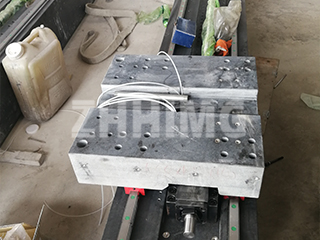Granite surface plates are precision reference tools meticulously crafted from high-quality natural granite and finished by hand. Known for their distinctive black gloss, precise structure, and exceptional stability, they offer high strength and hardness. As a non-metallic material, granite is immune to magnetic reactions and plastic deformation. With a hardness 2-3 times greater than cast iron (equivalent to HRC >51), granite plates deliver superior and stable accuracy. Even if struck by heavy objects, a granite plate may only chip slightly without deforming—unlike metal tools—making it a more reliable choice than high-grade cast iron or steel for precision measurement.
Precision in Machining and Usage
Ideal for both industrial production and laboratory measurements, granite surface plates must be free from defects that impact performance. The working surface should have no sand holes, shrinkage porosity, deep scratches, bumps, holes, cracks, rust spots, or other flaws. Minor imperfections on non-working surfaces or corners can be repaired. As a natural stone precision instrument, it is the preferred reference for inspecting instruments, precision tools, and mechanical components.
Key Advantages of Granite Surface Plates:
- Uniform Structure & High Precision: The material is homogenous and stress-relieved. Hand-scraping ensures extremely high accuracy and flatness.
- Superior Physical Properties: Tested and proven, granite offers exceptional hardness, dense structure, and strong resistance to wear, corrosion, acids, and alkalis. It performs reliably in diverse environments and outperforms cast iron in stability.
- Non-Metallic Benefits: As a rock-based material, it will not magnetize, bend, or deform. Heavy impacts may cause minor chipping but will not compromise the overall accuracy like metal deformation would.
Usage and Maintenance Comparison with Cast Iron Plates:
When using a cast iron plate, extra care is needed: handle workpieces lightly to avoid collisions, as any physical deformation directly affects measurement accuracy. Rust prevention is also critical—a layer of anti-rust oil or paper must be applied when not in use, adding complexity to maintenance.
In contrast, granite surface plates require minimal upkeep. They are inherently stable, corrosion-resistant, and easy to clean. If accidentally bumped, only small chips may occur, with no effect on functional accuracy. No rust-proofing is needed—just keep the surface clean. This makes granite plates not only more durable but also far easier to maintain than their cast iron counterparts.
Post time: Aug-20-2025

